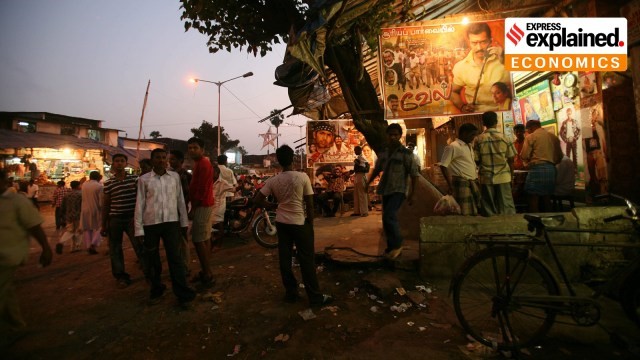Poverty Measurement in India: Revisiting the Rangarajan Line and the Rise of Multidimensional Poverty

- 21 Oct 2025
In News:
The debate on poverty measurement in India has gained renewed significance with the Reserve Bank of India’s Department of Economic and Policy Research (DEPR) updating state-wise poverty estimates using the 2022–23 Household Consumption Expenditure Survey (HCES). This marks the first major recalibration of the C. Rangarajan Committee’s poverty line, originally formulated in 2014, and reflects shifting paradigms in assessing deprivation in India.
Revisiting the Rangarajan Framework
The Rangarajan Committee was tasked with redefining poverty beyond the earlier Tendulkar methodology. It fixed the poverty line at ?972 per capita per month in rural India and ?1,407 in urban areas (2011–12 prices), categorising about 29.5% of the population as poor. Its poverty basket focused on minimum nutritional requirements along with basic spending on health, education, fuel, clothing, and rent. Unlike later approaches, it offered a strict consumption-based benchmark rooted in monetary expenditure.
Updated Poverty Trends: State-wise Insights
RBI economists reconstructed poverty lines for 20 major states based on HCES 2022–23 data using a new price index aligned with the original poverty line basket rather than Consumer Price Index weights. The findings highlight remarkable improvements, with major reductions observed in traditionally backward states:
- Odisha: Rural poverty fell from 47.8% (2011–12) to 8.6% (2022–23)
- Bihar: Urban poverty dropped from 50.8% to 9.1%
- Kerala: Rural poverty declined to 1.4%; Himachal Pradesh’s urban poverty fell to 2%
- Lowest poverty levels: Rural Himachal Pradesh (0.4%) and urban Tamil Nadu (1.9%)
- Highest poverty levels: Chhattisgarh (25.1% rural; 13.3% urban)
These transformations reflect improved rural infrastructure, livelihood programmes, PDS reforms, and social transfers. Yet persistent poverty in central Indian states underscores uneven development and structural gaps in employment quality, agrarian distress, and welfare delivery.
Methodological Continuity and Debate
Poverty estimates vary sharply across institutions, illustrating the sensitivity of measurement frameworks:
- SBI (2023–24): ~4–5% poverty
- World Bank (2022): 10.2% poverty in 2019
- IMF (2022): 0.8% in 2019 (including food transfers)
These disparities stem from differing inflation adjustments, survey datasets, and treatment of welfare subsidies. They also fuel a longstanding debate: can income-based poverty capture human deprivation comprehensively, especially in a transforming economy with evolving consumption patterns?
Shift to Multidimensional Poverty
Official focus has now decisively shifted to multidimensional poverty aligned with SDG frameworks. India’s Multidimensional Poverty Index (MPI) evaluates deprivation across twelve indicators spanning health, education, and living standards. According to NITI Aayog (2024), 24.82 crore people exited multidimensional poverty between 2013–14 and 2022–23, reducing MPI from 29.17% to 11.28%. This highlights the impact of welfare architecture—PDS expansion, Ujjwala, Saubhagya, Jal Jeevan Mission, Swachh Bharat, and financial inclusion.
Way Forward
- Regular poverty line updates reflecting new consumption patterns and regional price realities
- Integration of income and multidimensional metrics for balanced welfare planning
- Timely survey releases and transparent data to strengthen evidence-based policymaking
- Targeted interventions for lagging states like Chhattisgarh, Jharkhand, and parts of UP
- Leveraging digital delivery systems to minimise leakages and enhance inclusivity
Conclusion
India’s poverty trajectory reflects a dual narrative—sharp improvements driven by welfare provisioning and growth, yet uneven progress across regions and methodological contestation. While the Rangarajan line continues to serve as a benchmark for monetary poverty, the dominance of multidimensional metrics signals a shift towards understanding deprivation as a matter of human capability, not merely income. Ensuring sustained and equitable poverty reduction will require methodological rigor, policy innovation, and heightened focus on lagging geographies to achieve inclusive development.
